Categoría "hadoop"
Se han encontrado 12 Coincidencias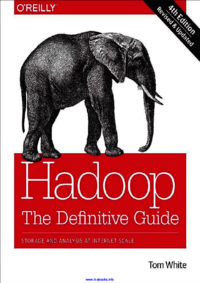
Hadoop: The Definitive Guide
Big Data
84 Visitas | 126 Descargas | 2015-04-07 21:20:52 | cbustillo
Get ready to unlock the power of your data. With the fourth edition of this comprehensive guide, you'll learn how to build and maintain reliable, scalable, distributed systems with Apache Hadoop. This book is ideal for programmers looking to analyze datasets of any size, and for administrators who want to set up and run Hadoop clusters. Using Hadoop 2 exclusively, author Tom White presents new chapters on YARN and several Hadoop-related projects such as Parquet, Flume, Crunch, and Spark. You'll learn about recent changes to Hadoop, and explore new case studies on Hadoop's role in healthcare systems and genomics data processing.
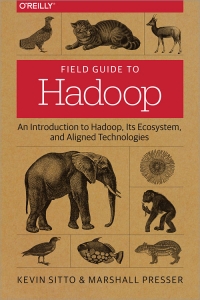
Field Guide to Hadoop
Big Data
80 Visitas | 103 Descargas | 2015-04-07 21:30:07 | cbustillo
QR code - Field Guide to Hadoop Book Description If your organization is about to enter the world of big data, you not only need to decide whether Apache Hadoop is the right platform to use, but also which of its many components are best suited to your task. This field guide makes the exercise manageable by breaking down the Hadoop ecosystem into short, digestible sections. You'll quickly understand how Hadoop's projects, subprojects, and related technologies work together. Each chapter introduces a different topic - such as core technologies or data transfer - and explains why certain components may or may not be useful for particular needs. When it comes to data, Hadoop is a whole new ballgame, but with this handy reference, you'll have a good grasp of the playing field.
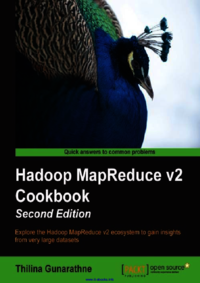
Hadoop MapReduce v2 Cookbook - Second Edition
Hadoop MapReduce
76 Visitas | 89 Descargas | 2015-11-02 15:13:32 | pecarrazana
Source code can find here: https://nube.uclv.cu/public.php?service=files&t=46c9d61563370329b3a3aedc0176c431 If you are a big data enthusiast and wish to use Hadoop v2 to solve your problems, then this book is for you. This book is for Java programmers with little to moderate knowledge of Hadoop MapReduce. This is also a one-stop reference for developers and system admins who want to quickly get up to speed with using Hadoopv2. It would be helpful to have a basic knowledge of software development using Java and a basic working knowledge of Linux.
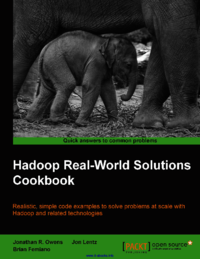
Hadoop RealWorld Solutions Cookbook
Hadoop
64 Visitas | 81 Descargas | 2015-11-02 15:15:52 | pecarrazana
This book uses concise code examples to highlight different types of real-world problems you can solve with Hadoop. It is designed for developers with varying levels of comfort using Hadoop and related tools. Hadoop beginners can use the recipes to accelerate the learning curve and see real-world examples of Hadoop application. For more experienced Hadoop developers, many of the tools and techniques might expose them to new ways of thinking or help clarify a framework they had heard of but the value of which they had not really understood.
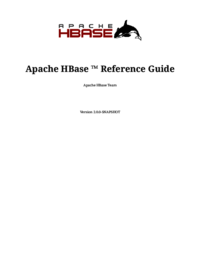
Apache HBase Reference Guide
Apache HBase
64 Visitas | 74 Descargas | 2015-11-10 20:19:12 | pecarrazana
This is the official reference guide for the HBase version it ships with. Herein you will find either the definitive documentation on an HBase topic as of its standing when the referenced HBase version shipped, or it will point to the location in Javadoc or JIRA where the pertinent information can be found.
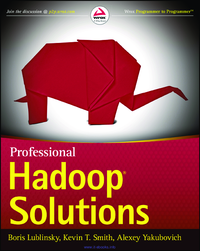
Professional Hadoop Solutions
Hadoop Solutions
70 Visitas | 68 Descargas | 2015-11-13 20:47:47 | pecarrazana
It’s not that there is a lack of books about Hadoop. Quite a few have been written, and many of them are very good. So, why this one? Well, when the authors started working with Hadoop, we wished there was a book that went beyond APIs and explained how the many parts of the Hadoop ecosystem work together and can be used to build enterprise-grade solutions. We were looking for a book that walks the reader through the data design and how it impacts implementation, as well as explains how MapReduce works, and how to reformulate specific business problems in MapReduce.We were looking for answers to the following questions: ? What are MapReduce’s strengths and weaknesses, and how can you customize it to better suit your needs? ? Why do you need an additional orchestration layer on top of MapReduce, and how does Oozie fit the bill? ? How can you simplify MapReduce development using domain-specific languages (DSLs)? ? What is this real-time Hadoop that everyone is talking about, what can it do, and what canit not do? How does it work?
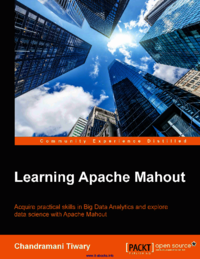
Learning Apache Mahout
Apache Mahout
81 Visitas | 89 Descargas | 2015-11-27 16:40:00 | pecarrazana
Learning Apache Mahout is aimed at providing a strong foundation in machine learning using Mahout. This book is ideal for learning the core concepts of machine learning and the basics of Mahout. This book will go from the basics of Mahout and machine learning, to feature engineering and the implementation of various machine learning algorithms in Mahout. Algorithm usage examples will be explained using both the Mahout command line and its Java API. We will conclude the book with two chapters of end-to-end case studies. Ideally, chapters 1, 2 and 3 should be read sequentially, chapters 4 to 8 in any order, and chapters 9 and 10 after chapter 1 to 8 have been completed.
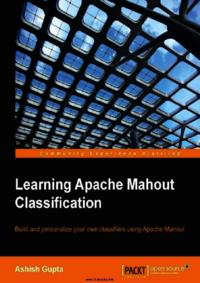
Learning Apache Mahout Classification
Learning Apache Mahout Classification
63 Visitas | 114 Descargas | 2015-11-27 16:43:25 | pecarrazana
If you are a data scientist who has some experience with the Hadoop ecosystem and machine learning methods and want to try out classification on large datasets using Mahout, this book is ideal for you. Knowledge of Java is essential. To use the examples in this book, you should have the following software installed on your system: Java 1.6 or higher Eclipse Hadoop Mahout; we will discuss the installation in Chapter 2, Apache Mahout, of this book Maven, depending on how you install Mahout
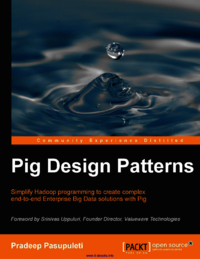
Pig Design Patterns
Pig Design Patterns
49 Visitas | 68 Descargas | 2015-11-27 16:46:36 | pecarrazana
The Pig platform surely is one of these methods. Nevertheless, the power of such a platform is best tapped by extending it efficiently. Extending requires great familiarity of the platform. More importantly, extending is fun when the process of building such extensions is easy. The Pig Latin platform offers great simplicity. However, a practitioner's advice is immensely valuable in leveraging this simplicity to an enterprise's own requirement. This is where I find this book to be very apt. It makes you productive with the platform pretty quickly through very well-researched design patterns. This helps simplify programming in Hadoop and create complex end-to-end enterprise-grade Big Data solutions through a building block and best-pattern approach. This book covers the journey of Big Data from the time it enters the enterprise to its eventual use in analytics, either in the form of a dashboard or a predictive model.
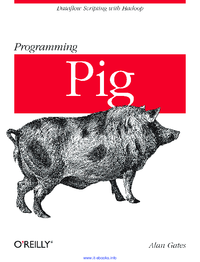
Programming Pig
Programming Pig
70 Visitas | 66 Descargas | 2015-11-27 16:48:20 | pecarrazana
This book is intended for Pig programmers, new and old. Those who have never used Pig will find introductory material on how to run Pig and to get them started writing Pig Latin scripts. For seasoned Pig users, this book covers almost every feature of Pig: different modes it can be run in, complete coverage of the Pig Latin language, and how to extend Pig with your own User Defined Functions (UDFs). Even those who have been using Pig for a long time are likely to discover features they have not used before. Being a relatively young project, Pig has changed and grown significantly over the last four years. In that time we have released versions 0.1 through 0.9. This book assumes Pig 0.7 as the base version. Wherever features are only in versions 0.8 or 0.9, this is called out. The biggest change from 0.6 to 0.7 is that load and store function interfaces were rewritten, so Chapter 11 will not be usable by those on 0.6 or earlier versions. However, the rest of the book will still be applicable. Some knowledge of Hadoop will be useful for readers and Pig users. Appendix B pro- vides an introduction to Hadoop and how it works. “Pig on Hadoop” on page 1 walks through a very simple example of a Hadoop job. These sections will be helpful for those not already familiar with Hadoop. Small snippets of Java, Python, and SQL are used in parts of this book. Knowledge of these languages is not required to use Pig, but knowledge of Python and Java will be necessary for some of the more advanced features. Those with a SQL background may find “Comparing query and dataflow languages” on page 4 to be a helpful starting point in understanding the similarities and differences between Pig Latin and SQL.
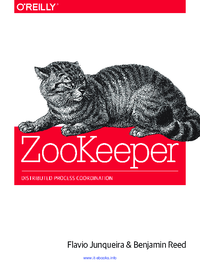
ZooKeeper
Zookeeper
70 Visitas | 77 Descargas | 2015-11-27 16:51:48 | pecarrazana
Building distributed systems is hard. A lot of the applications people use daily, however, depend on such systems, and it doesn’t look like we will stop relying on distributed computer systems any time soon. Apache ZooKeeper has been designed to mitigate the task of building robust distributed systems. It has been built around core distributed computing concepts, with its main goal to present the developer with an interface that is simple to understand and program against, thus simplifying the task of building such systems. Even with ZooKeeper, the task is not trivial—which leads us to this book. This book will get you up to speed on building distributed systems with Apache ZooKeeper. We start with basic concepts that will quickly make you feel like you’re a distributed systems expert. Perhaps it will be a bit disappointing to see that it is not that simple when we discuss a bunch of caveats that you need to be aware of. But don’t worry; if you under? stand well the key issues we expose, you’ll be on the right track to building great dis? tributed applications.
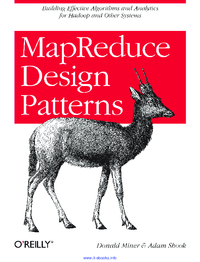
MapReduce Design Patterns
MapReduce Design Patterns
81 Visitas | 90 Descargas | 2015-12-11 18:28:50 | pecarrazana
MapReduce is a computing paradigm for processing data that resides on hundreds of computers, which has been popularized recently by Google, Hadoop, and many others. The paradigm is extraordinarily powerful, but it does not provide a general solution to what many are calling “big data,” so while it works particularly well on some problems, some are more challenging. This book will teach you what problems are amenable to the MapReduce paradigm, as well as how to use it effectively. At first glance, many people do not realize that MapReduce is more of a framework than a tool. You have to fit your solution into the framework of map and reduce, which in some situations might be challenging. MapReduce is not a feature, but rather a con? straint. This makes problem solving easier and harder. It provides clear boundaries for what you can and cannot do, making the number of options you have to consider fewer than you may be used to. At the same time, figuring out how to solve a problem with con? straints requires cleverness and a change in thinking. Learning MapReduce is a lot like learning recursion for the first time: it is challenging to find the recursive solution to the problem, but when it comes to you, it is clear, concise, and elegant. In many situations you have to be conscious of system resources being used by the MapReduce job, especially inter-cluster network utilization. The tradeoff of being confined to the MapReduce framework is the ability to process your data with dis? tributed computing, without having to deal with concurrency, robustness, scale, and other common challenges. But with a unique system and a unique way of problem solving, come unique design patterns.
Contribuir
Usted puede contribuir con Libros UCLV, es importante para nosotros su aporte..
Contribuir